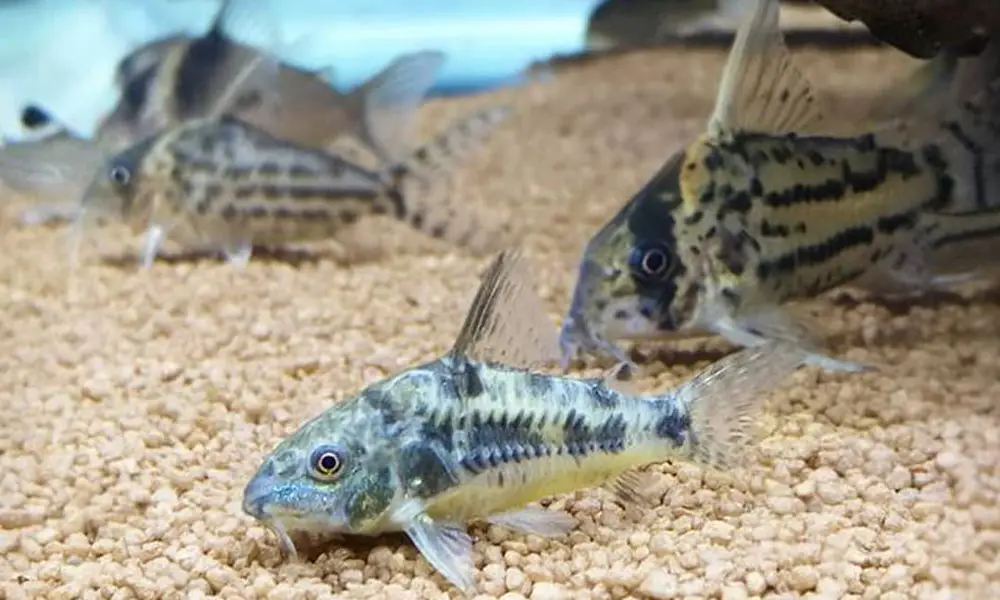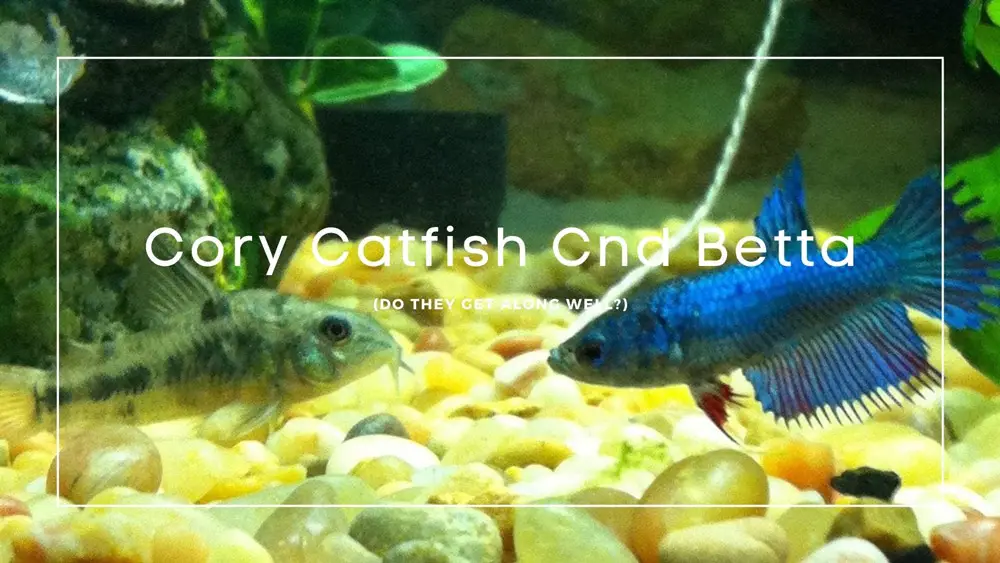Bettas are notorious for their aggressive behavior, but this doesn’t mean that they should always be isolated.
This is good news for first-time fishkeepers, who may want to breed multiple species in one tank. And one such variety that complements bettas is corydoras catfish. However, there are some things you should know before starting out.
That’s why we are here to tell you how cory catfish and betta can peacefully coexist.
Things You Need to Know about Corydoras

They are Active Schooling Fish
Corydoras are among the most active schooling varieties, whether in the wild or in an aquarium.
In fact, it’s not unusual to spot them swimming synchronized in large groups in the wild, ranging from 20 to even 100. Not only that, but they may also collaborate with other schools (primarily of tetra fish) within their region.
That’s why it’s always recommended to keep at least 3 corys in an aquarium, with 6 being the preferred number. A lone cory will either try to blend with the other fish in the aquarium or do away with any activity whatsoever.
Lots Of Species
Corydoras species are primarily native to South America and are by far the largest genus of Neotropical fishes in the world. Currently, there are close to 170 identified species, with about 100 more yet to be classified or categorized but kept by aquarists.
Most of them grow between 1 and 3 inches long in aquariums and prefer temperatures between 72 and 82 degrees Fahrenheit.
For instance, the peppered cory and julii cory varieties thrive in colder temperatures, while the sterbai cory catfish love warmer regions.
Min Tank Size for Corydoras
The dwarf cory species may be bred in a 10-gallon tank, but a 20-gallon aquarium is recommended for a majority of the other species. Besides, almost all of them are peace-loving bottom dwellers, so it’s safe to say that they can coexist with other community fish varieties as long as they aren’t attacked.
Can Cory Catfish Live with Bettas?
The short answer would be yes, cory catfish and bettas can live with each other in the tank. Most corys aren’t too brightly colored and don’t have any long fins either, meaning they are less likely to intimidate the bettas.
Besides, they usually occupy the bottom of the tank, whereas bettas like staying on the top. The former also have different diet preferences, meaning you shouldn’t have to worry about “food fights.”
That said, these situations are largely applicable to bigger tanks, like the 20-gallon ones. As you may be aware, bettas don’t like crowded aquariums. So, too many fishes in a small tank (less than 10-gallon) can get them agitated and they may start fighting with their “neighbors” to free themselves.
Tricks To Help Your Cory Catfish And Betta To Get Along
Consider The Betta’s Temperament
Whether or not you can successfully add corydoras to a betta tank will depend on the betta’s temperament. So, keep a close eye on the betta after the entry of the cory school. If you see that it’s chasing or trying to harm the corydoras, separate them immediately.
Tank size
Since corys like staying in groups of 5 or 6, they need adequate water to swim around the tank. And bettas usually thrive in at least 10-gallon tank, so the minimum tank size requirement for keeping them together is 20 gallons. But if you have the space and budget, you can even opt for a larger tank.
Type Of Corydoras
Although you may want to go with physically attractive species like albino cory or spotted cory, pygmy corydoras are considered the most suitable companions for bettas.
This is because they grow to a size of less than 1-inch, making them almost invisible to the bettas, especially in smaller tanks ranging from 10 to 15 gallons. Besides, they are extremely easy to care for.
Lots of Places To Hide
Both bettas and corys like having plenty of hiding spots in their habit. So, ensure that you decorate the aquarium with enough plants, caves, and driftwood to prevent them from any stress.
How to Introduce Corydoras to an Established Betta Tank?
The best way to introduce corydoras to your bettas is to shift them to another tank or bowl for some time and slightly change the decoration in the aquarium. This will disrupt their existing territory, meaning they will be less likely to fight for space with the new occupants.
Then, add the corydoras and let them get used to the setup for a couple of hours to get accustomed to the environment. Once they settle behind their hiding spots, put back the bettas and observe for some time to see any aggressive behavior.
Add Indian Almond Leaves in the Tank
Indian almond leaves may help create an environment that mimics the natural habitat of bettas, making them more comfortable in the tank. Plus, their antibacterial and antifungal properties may prevent infections and diseases.
FAQs
Can Cory Catfish Eat Betta Food?
Corys are practically scavengers and often referred to as bottom-cleaners, so they will eat pretty much everything in the tank, including betta food. However, they also need a balanced diet containing the right amounts of animal protein and vegetation like algae.
Do Cory Catfish Eat Betta Poop?
No, corys don’t eat betta poop. Since they often dig through the substrate to find food, they end up burying the poop, which may give an illusion that they have consumed it.
Final Thoughts
We hope that we could help you understand if you can keep corydoras catfish together.
Female bettas are said to be less aggressive than males, so you may want to consider them for your bettas. But even then, make sure that you observe their temperament and provide the required space and nutrition for both.
We will see you next time. Goodbye!





